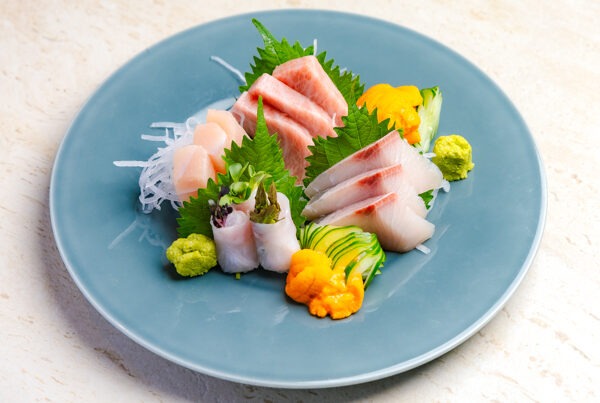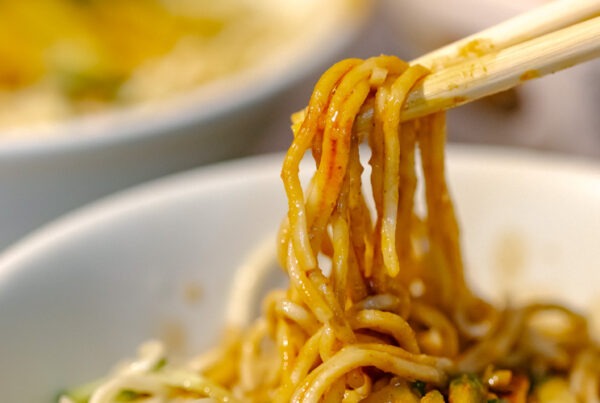Rock Climbing, Diving, Surfing, Kayaking, and other Outdoor Activities on the Northeast Coast
Text | Rick Charette
Photos | Chen Kuo-Cheng
Rock climbing, snorkeling, cape and mountain hiking, river and sea kayaking, coast-side bicycling, surfing, barbecuing. These are some of the outdoor-fun options available on the Northeast Coast menu. Sound like pleasure? Let’s head out, then, to the mighty blue Pacific Ocean!

Day One
It’s a Monday morning, and I’m standing on a street corner in downtown Taipei. It’s startlingly early for night-owl me – 0700 hours. The rest of my travel adventure team shows up, one by one. With all present and accounted for, we launch. We’re self-driving and, just beating the rush-hour traffic, we’re out of the city and on the northeast coast in just 30 minutes.
Our quest this trip – outdoor exercise, myriad ways, in a big natural playground. The Northeast Coast stretches from just south of the harbor city of Keelung to just north of the town of Toucheng in the northeast corner of the wide, ocean-facing Yilan Plain in Yilan County. We’re exploring the section that lies within the Northeast and Yilan Coast National Scenic Area, from a place called Nanya to Toucheng.
Taiwan’s shape is often compared to a tobacco leaf floating in the sea, leaf tip on the north, stubby stem on the south. Long and high mountain ranges run north-south along its length, the ridges in the far north veering northeast and dropping into the sea. This, as you’d guess, makes for stunning scenery and real nice photos. There are a few flattish indentations on the northeast coast where farming is attempted, but fishing is the name of the game in these parts (along with tourism these days), and all along the coast here you’ll come across brightly painted craft packed in like sardines in nifty little harbors with cliff-y backdrops at the base of high, finger-like capes. A single road – Provincial Highway No. 2, commonly called the Coastal Highway – is etched into the base of the high bluffs that jostle for position along the shore.
Nanya Rocks
Our first stop is Nanya, an area between highway and coast that features gnarled sandstone rock formations shaped by patient wind/water erosion. The sun is still at a nice low angle when we arrive, accentuating the whimsical nature of the shapes. The rock, underwater long ago, has been pushed up by tectonic activity. The formations have dazzling striations of iron that have become efflorescent with exposure to sun and air. The best-known formation is a giant rock that looks – to me, an ice-cream lover fighting his weight – a humongous butterscotch custard (the sandstone) lined with caramel layers (the iron) that is melting. Go verify for yourself. The boardwalks here make a walk a pleasure.
Longdong Rock Climbing
Next up – rock climbing. Longdong, literally “Dragon Hole,” has north Taiwan’s best rock climbing, on the sheer rock cliffs that run along much of the length of Longdong Cape. According to one of our two climbing guides this day, Xiao Huzi (“Little Beard”), owner of XHZ Adventure School, “Dragon Hole” refers to a massive cave at the base; long-ago folk thought that surely “here be dragons.” The hole was carved by wave and tide before tectonic activity pushed it up and out of the sea. We meet up with Little Beard and Zhang Yu-xiang, one of Taiwan’s top rock climbers, at the tiny fishing village of Longdong, on the cape’s north side on Longdong Bay, at a diving/snorkeling gear shop – the Longdong area also has north Taiwan’s best diving – just before the end of the village’s one, dead-end, road. Making our way carefully along the boulder-strewn shore beyond the village, we come to sheer-rock cliffs, mostly sandstone, that soar 40 meters high, receive instruction on climbing basics, and revel in two hours of scrambling up and down at different locations. Our guides bring all gear, and one is near you at all times, leading the way and attached to the same safety rope.

XHZ Adventure School (小鬍子冒險學校)
Tel: 0939-625-099
IG: www.instagram.com/XHZOUTDOOR
FB: www.facebook.com/xhz.school
Longdong Snorkeling
Following this – sea snorkeling. Longdong Bay (“Longdongwan”) is one of the Northeast Coast’s most popular swimming spots, and one of Taiwan’s top diving locations, featuring a great variety of marine life in its cool, clear waters. The recreational facilities within the park here, Longdong Ocean Park, are centered on snorkeling and diving. There is a large roped-off area with water up to a man’s chest on the deep side. There are lifeguards, and if you rent diving/snorkeling equipment you can swim about on your own here. Snorkeling and diving classes are also held, and you can pay, as we do, to have one of the licensed instructors take you out into deeper water, where currents are stronger and a reef serves as a natural breakwater. Not all of us are experienced swimmers or snorkelers, so we do not venture further. (The park demands everyone wear life jackets and dive suits.)

Though not quite as colorful as Kenting National Park, the marine-life viewing is nevertheless splendid. Among the most colorful and/or interesting creatures I see are angelfish, puffer fish, starfish, clown fish, spiky urchins, flying gurnards, and scorpion fish. I repeatedly watch, fascinated, as fevered schools of small sweetfish attack and eat the small, almost invisible jellyfish that make it past the reef (your dive suit protects you from the latter).
Bitou Cape Hiking
After our sea life exploration – cape hiking. We first tackle the Longdongwan Cape Trail, starting on Longdong Cape’s south side. There is a large, attractive temple just off the highway; the trailhead parking lot is just beyond. Our main interest here is reaching the tip of the cape and taking in the spectacular views standing on the edge of the sheer cliffs 40-plus meters high in spots. For this you need just15~20 minutes one way, passing by informative signboards with good English and pathways down to the shore. We see scores of long-line fishermen posed on rocky outcrops far down below, surf crashing near their feet. Along the trail are grassy areas, one with a gazebo where we get a great bird’s-eye view of the giant dragon cave below, looking down past our feet. The dragon seems to be out for the day, for all is quiet.

To the north, past Longdong Ocean Park, is the next cape, rugged Bitou Cape. We go back, get our car, and drive to the highway-side Bitou Cape parking lot. The large cape covers an area of almost five square kilometers. There are two paths you can follow, both starting beside the highway, both following the cape’s south-side contours, one up above the cliffs, one following the rocky shore, the latter defined by stone platforms and other strange-shaped eroded landforms. They join above the cliffs about half-way along to the cape’s tip, where a proud white lighthouse stands 120 meters above the crashing surf (the structure itself is 12.3 meters). It was put up by the Japanese in 1896, and was given its present form after being bombed by the Allies in WW II. The cape’s path-accessed highest point is just before the tip, from which we enjoy spectacular views of mountains falling into the sea, north and south, as far as the eye can see.

Day Two
Fulong Kayaking
We overnight at Longmen Riverside Camping Resort, and in the morning walk over to the section along the Shuangxi River. Our host this morning is John Sun, head of the resort’s kayaking operation. We get our life-jackets and paddles, are introduced to our guide, Wang Yu-wei (“Wei Wei”), and receive instructions in kayaking basics. I note that all the kayaks are open-faced and are for two people (with a middle seat for kids), and John informs me that originally all craft were the “Eskimo” kind that seal around the waist, but that Asian folk are not as experienced as Westerners on/in water, and customers were always nervous they could not handle rollovers.

We head out with Wei Wei, first visit the long sand bar that runs almost completely across the river where it meets the sea, enjoying the sweeping coastal-mountain panorama, then head upriver for a run of about 8 km (return), enjoying the egrets, herons, crabs, jumping fish, and other local inhabitants.
Just upriver from the kayaking center you’ll see a picturesque suspension bridge, for bikers and walkers. This is part of a long, easy-grade route stretching a few km south of Fulong town and north to Yanliao village. Most people start out from Fulong; there are bike-rental shops before the train station, the daily rate just NT$100 (the Longmen campground also has rentals for guests).
Wushi Harbor Surfing
Our final Northeast Coast outdoor challenge before heading home to Taipei is surfing – well, attempts at surfing, anyway. We first went to Wushi Harbor, where there is a decided party atmosphere at the beach near the north-side breakwater. The narrow road before the beach, with a wooded area between, is lined with surf-gear shops, cafés, and other outlets catering to the beach-bum crowd. Our host and instructor this afternoon, Xiao Gu (“Little Gu”), is owner of G-Cool Surf, a shop/café/bar selling and renting gear. This and other shops give group surf lessons on the beach, and Xiao Gu gives us a private lesson, kindly refraining from chuckling as we endlessly fumble about and perform comic flips and tumbles. Telling us that the crowds at this popular location make it hard for more accomplished surfers to find much open water, he takes us a bit north to the less- or undeveloped beach of Honeymoon Bay where hard-core surfers hang out. It is at Daxi town, directly across from the highway-side railway station. There are far fewer people here and waves at the area’s surf beach are about four feet.

G-Cool Surf Shop
(極酷衝浪)
Tel: (03) 977-0266
Add: 93-2 Gangkou Rd., Gangkou Borough, Toucheng Town, Yilan County
(宜蘭縣頭城鎮港口路93之2號)
Website: www.surfing.com.tw (limited English)
Getting There and Around
A number of stations on the North Link Railway, which runs from Taipei to Hualien, are on the Northeast Coast strip we’ve explored here, and trains run often enough that you can use it like a bus to explore the northeast coast. Taiwan Tourist Shuttle (www.taiwantrip.com.tw) buses on the Gold Fulong Route also cover much of this article’s area, running between Ruifang Railway Station and the Tourism Bureau’s Fulong Visitor Center.
Northeast Coast Activities on Klook
Northeast Coast Instagram Tour
Jiufen Old Street & Northeast Coast Tour
Stand Up Paddle Boarding and Snorkeling Experience in Taipei
New Taipei: Longdong Bay SUP Sunrise/Sunset Experience Tour in Northeast Corner
About the author

Rick Charette
A Canadian, Rick has been resident in Taiwan almost continually since 1988. His book, article, and other writings, on Asian and North American destinations and subjects—encompassing travel, culture, history, business/economics—have been published widely overseas and in Taiwan. He has worked with National Geographic, Michelin, APA Insight Guides, and other Western groups internationally, and with many local publishers and central/city/county government bodies in Taiwan. Rick also handles a wide range of editorial and translation (from Mandarin Chinese) projects.












